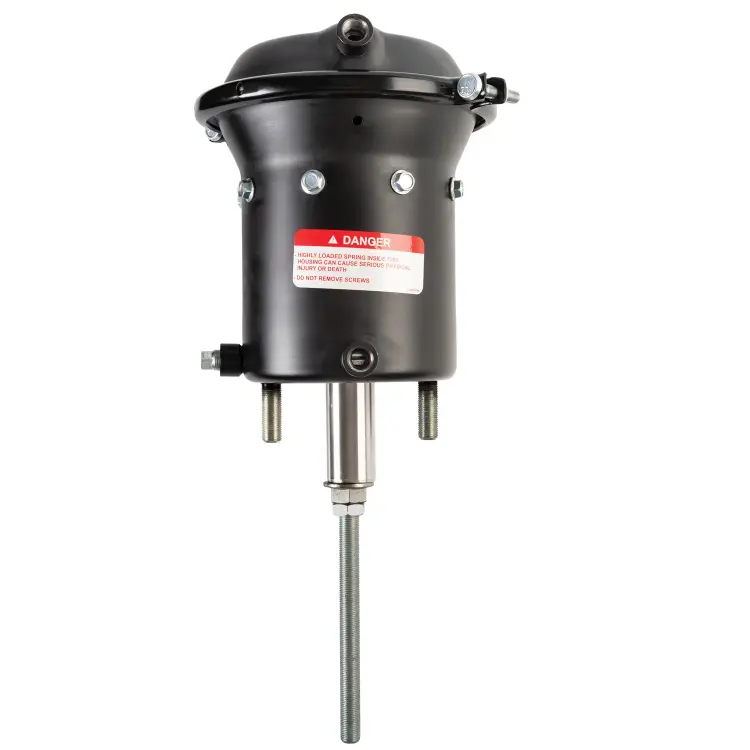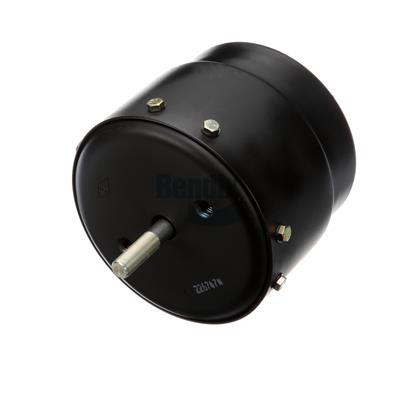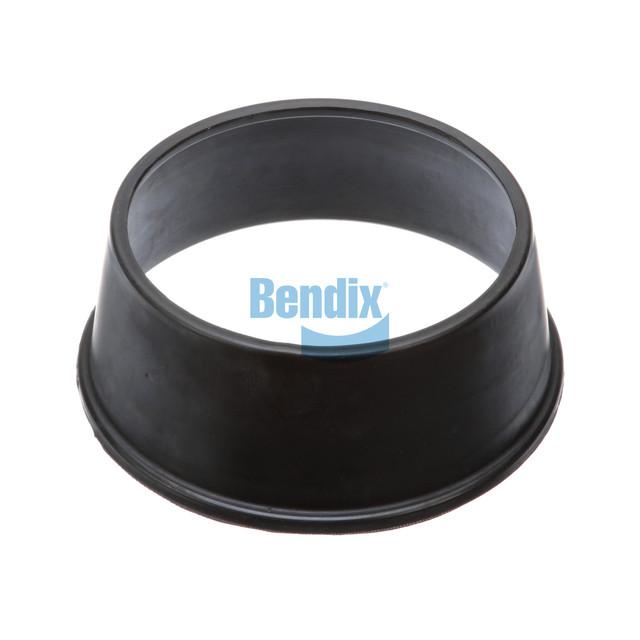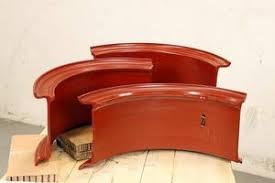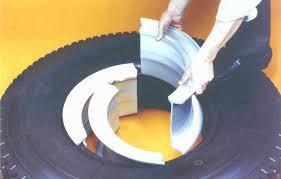
Geoff Weeks
Pedigreed Bulldog-
Posts
2,134 -
Joined
-
Last visited
-
Days Won
7
Content Type
Profiles
Forums
Gallery
Events
Blogs
BMT Wiki
Collections
Store
Everything posted by Geoff Weeks
-
Striaght pipping a Ford F-450, with a 7.3L
Geoff Weeks replied to Joey Mack's topic in Engine and Transmission
Only problem on straight pipes (other than noise) is if they are really short, and that really only applies to throttled engines. If a throttled engine is working hard climbing a hill then goes from wide open to fully closed, the vacuum can draw cool air back over the red hot exh valve. None of that applies to a diesel. As much as I despise straight pipes, I know of no damage it will do, other than to annoy everyone. -
President Trump assassination attempt at PA rally tonight.
Geoff Weeks replied to tjc transport's topic in Odds and Ends
I think Trump would be a very hard client to protect. His nature is to do what he wants and not listen to those around him. He famously wanted the metal detectors and "gates" remove for his rally on the ellipse on Jan 6th. Saying "they are my people, they are not here to hurt me, let them in" or something close to that. Compliancy, can ruin the best plan, and it looks like security got complacent. -
Yeah, that would still be legal the way I read it, as long as it isn't towing a trailer. So I guess it depends on your plans for the truck?
-
President Trump assassination attempt at PA rally tonight.
Geoff Weeks replied to tjc transport's topic in Odds and Ends
Well, the fact that he doesn't have an arrest record (public records that are searchable), calls into question the other claims as well. We all know highs school kids never make stuff up or exaggerate! -
To get back to the OP problem, I was doing some reading on the exceptions to the spring brake requirements. 393.41 sub parts B and C seam to indicate that spring brakes would not be required if the tractor NEVER towed a trailer, as it pre dates the requirement. The spring brake requirements were only retro-active for "combinations". Which I guess explains why you can see single vehicles (straight trucks) with driveshaft brakes later than when spring brakes were common on tractors. Also mentions the "heavy haul" exception. It does seam to indicate that if you did put smaller cans on to gain spring brakes you would be against the law as now the brakes are not as effective as when the truck was built. Whether that would bring you grief or not, I don't know?
-
President Trump assassination attempt at PA rally tonight.
Geoff Weeks replied to tjc transport's topic in Odds and Ends
Not the info I am hearing, no arrests, no police contact in the past, no affiliation with any groups and registered as a republican. Where does your info come from? Sounds like a a bunch of made up stuff to stir up people already looking to blame others. -
Wrong! Are legal but cost about 10x what a diaphragm chamber does. They are smaller in diameter for the same "size" and will fit where clamp chambers will not. You see them more on heavy off road equipment than on on-road trucks. Also can be had with spring brakes built in. When spring brakes are in the chamber the spring is in the 1/2 closest to the push rod, and a tube surrounds the push rod and butts up to a large (thick) washer on the push rod, applying the brakes. I almost lost a finger to one of these when searching for an air leak on a bus when the brakes tripped and caught my finger between the tube and washer. The one that got me, was a rotochamber on a Austrian bus (Graff-Stief sp?) , but worked like the Maxi, unless I am mistaken and it was a Maxi? I don't think so, it happened over 40 years ago so my memory could be off. A -30 rotochamber is smaller in diameter than a -30 clamp chamber. Re-reading your post, I think you are confusing old Maxi-brake with roto chambers. Roto chambers don't use O rings, they use a rubber cone kinda like an air bag with out the top and bottom plate. Maxi-brakes had a piston (as did other types of piston spring brake chambers) Maxi's were the ones that couldn't be "caged" in the field like most modern brakes can. easy to mix them as they look somewhat similar. Roto chambers claim to fame is they have an almost constant force over the whole travel. Top to bottom, Maxi, rotor chamber, rotor chamber diaphrgm.
-
Oh, that is different, yeah trailers before -121 didn't have parking brakes, only emergency (break a way) brakes. Most vans and flatbeds got spring brakes around 1975 but specialized and heavy haul were exempt and may still be. I thought you were talking about tractors using air for parking. Never heard of or saw that. I've towed many trailers without spring brakes. RGN's multi piece heavy haul stuff etc didn't have any parking brakes. I think they may now need them, but in the 90's they didn't. The newest heavy haul stuff I pulled had an extra air tank and manual valve to release the brakes so they could be "assembled" into hauling configuration from being stacked on the main deck for transport to-from the load/unload points. Std procedure was to back close to the trailer, air it up then pull the red line and back under.
-
Never saw a parking brake like you describe using air to apply, as its weak point is obvious. Early air braked vehicles (every one I've seen) had drum or disk driveshaft brakes for parking/E brake or had the weird system B models sometimes used with the remote "cans". I did see one hydraulic "hydrovac" system modified with a toggle to open the "back" chamber to atmosphere to apply the service brakes as an additional brake for winching. I'm sure it wasn't factory and was done at a shop, the lines were too small and the length of them would slow the boost application. Tru-Stop disk driveshaft brakes were the only one of it's kind that could meet the required stopping distance, but lacked the self applying component of spring brakes. They could be single or dual caliper depending on what was needed. My Dart had the dual caliper originally but was long gone by the time I got it, brackets and cross bars were still on the truck. It is early 50's. The requirement for self application on loss of air pressure is what killed "hand brakes" on trucks. They did continue on some buses, however.
-
It may be total BS, but I remember hearing years ago, the GM Astro and Mack windshields were the same. That said, and competent glass shop should know for sure. When working on the British buses, we had to adapt the window opening to a glass we could get. It wasn't as hard as it sounds, but does somewhat depend on the curve on the outer edge of the windshield being a match to the body. IHC's cabaovers all had the same windshield from the 80's through the end of the cabovers in the US and still used that cab elsewhere in the world. If all else fails I'd see if I could adapt one of them, as they weren't hard to get a few years ago.
-
West Coast Mirror History
Geoff Weeks replied to 1961H67's topic in Antique and Classic Mack Trucks General Discussion
I'd be interested in the documented history of them. My K's just had a single hinge mounted round mirror. Never heard how the evolution to the modern "west coast" mirror came about. -
President Trump assassination attempt at PA rally tonight.
Geoff Weeks replied to tjc transport's topic in Odds and Ends
Unfortunately it seams this is just the latest, not the 1st. -
President Trump assassination attempt at PA rally tonight.
Geoff Weeks replied to tjc transport's topic in Odds and Ends
Butler County DA confirms one bystander dead, and possible 2nd. All according to ABC news. Possible assassination attempt at Trump rally; shooter dead, DA says (msn.com) -
President Trump assassination attempt at PA rally tonight.
Geoff Weeks replied to tjc transport's topic in Odds and Ends
All over the news, but haven't seen any reports of any deaths? Any link to the reports of injuries? -
R Model Farm Truck
Geoff Weeks replied to seyser's topic in Antique and Classic Mack Trucks General Discussion
I would caution that straps and/or chains are not a substitute for a cage, neither are designed to absorb a blast, straps will be cut like hot butter and chains can become shrapnel. The are plenty of videos on the net of a tire coming apart in a tire cage, it is a single use item, they are there to absorb the energy release. BTW tube type and tubeless contain about the same stored energy. so MRSMACK doesn't have to find a picture and to set other hair on fire: -
Finally some DM progress
Geoff Weeks replied to mowerman's topic in Antique and Classic Mack Trucks General Discussion
The site history is gone, but the site is alive and well here: Home - Forums (justoldtrucks.com) All the older stuff has been lost, which is unfortunate. A lot of info was lost. -
R Model Farm Truck
Geoff Weeks replied to seyser's topic in Antique and Classic Mack Trucks General Discussion
My point was while there is nothing wrong with tubeless, and the availability of tires in stock for them far exceeds tube type, there is no NEED to change. If I had tires that were serviceable I would use them, rather than throwing them out and spending money on tires AND rims. -
R Model Farm Truck
Geoff Weeks replied to seyser's topic in Antique and Classic Mack Trucks General Discussion
Lock ring wheels/rims are NOT dangerous, if you know how to work with them. Not having them on the front, but having them elsewhere doesn't make much sense. The amount of energy stored in a truck tire, be it tubeless or tube type is considerable and needs to be treated with respect. I have thousand and thousands of miles on lockring wheels and never had a "dangerous moment'. I have had blow outs on the steer at 70 MPH with both tubeless and tube type, of the two, type type was easier to handle, the truck didn't want to pull or wander like the tire flip/flopped in gutter of a tubeless did. Of the countless lock ring wheels I have serviced over my years, I NEVER EVER had on blow apart. It isn't luck, it is knowing how to work with them. Fine, if you want to spend money on new rims and tires, but if your tires are sound you don't "HAVE TO". The Firestone RH-5 deg wheel was a bad design, and the only one I will not have, they have made people think that all multi piece rims are like handling a live grenade, which simply isn't the case. When properly handled and assembled, the bead of the tire expands over the lock-ring and forces it into the lock groove, once that happens you could cut the lock ring into sections and it still wouldn't come apart. Far too many assemble, clip on an air chuck and walk/run a way, and if it doesn't explode assume they did it correctly. -
R Model Farm Truck
Geoff Weeks replied to seyser's topic in Antique and Classic Mack Trucks General Discussion
If it is only going to stay local, and not many miles a year than I would stay with what it has. Nothing wrong with tube types, other than finding them in stock while traveling OTR. For farm use and local use they are every bit is good as tubeless and tend to loose air more slowly while sitting between use. -
At what engine speed? You will not get any charging at idle (or very very little) so measuring the voltage at idle is meaningless.
-
2V maxidyne, issue pulling heads off
Geoff Weeks replied to Lmackattack's topic in Engine and Transmission
Just to add a bit of clarity, it take TWO revolutions of the crank to adjust all the valves, when it point to 1-6 that means you adjust EITHER 1 or 6 not both (depending on which is on TDC compression) then you go to the next mark in line do the same there, when you come back to 1-6 you adjust the cylinder that was TDC exhaust the first time around, and continue on until all have been adjusted. Unless it is different then I remember. -
There can be a few reasons, wire shorting to chassie, but the most likely reason is the low air pressure switch. Where that switch is located will take someone with more knowledge of the "B" line than I. Often they are around the brake valve, but can be other places as well.
-
From what I remember, Small Cams had more of a problem with cam/cam followers than the Big cams. Can happen to any engine though. I had 1.5M on one of mine, rebuilt and is still out there as far as I know, was running fine when I sold it.
-
May be I overstated the difference between them. I had 1's and 3's as well as 4's and NT88's. All were good, and I wouldn't run away from any of them.
-
If it is still stock, that is a very workable truck as it was built. Depending on when Mack purchased the engine, it could be a Big Cam 1, 2 or maybe 3. All are good each higher number has some engineering changes to address some possible issues that came up, many of the refinements are backward compatible and can be added at overhaul. As an O/O I would want a 13 spd, but have owned trucks with that exact trans (and still have one in the barn). the early big cams were prone to the upper press fit of the liner wearing and leaking coolant at the head gasket because of it. It is repairable when that happens, but the best thing is to bore the block for lower press fit liners and install Big Cam 4 liners. Early oil system is not as good as 3 and later engines. Early blocks had shorter head bolts than the later, but I have never found a problem with the short bolts. Early had "log" type exhaust manifolds and single entry turbos, later had "pulse" manifolds and duel entry turbos.
BigMackTrucks.com
BigMackTrucks.com is a support forum for antique, classic and modern Mack Trucks! The forum is owned and maintained by Watt's Truck Center, Inc. an independent, full service Mack dealer. The forums are not affiliated with Mack Trucks, Inc.
Our Vendors and Advertisers
Thank you for your support!



